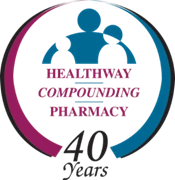Compounded Medications for Podiatrists
Podiatrists may have many needs for compounded medications.
Commonly prescribed compounds for podiatry include:
Onychomycosis – nail fungus
Having a compounded prescription medication may overcome problems associated with other medications. We can dissolve an antifungal medication in dimethylsulfoxide (DMSO) that has superior nail penetration and it is able to deliver an antifungal to the site of infection. Examples of antifungals that can be compounded in DMSO are azole antifungals and terbinafine.
Commonly prescribed formulas:
- Itraconazole 1%/Ibuprofen 2% in DMSO nail polish
- Ketoconazole/Tea Tree Oil/DMSO Antifungal Solution
- Terbinafine 1.67% Ibuprofen 2% DMSO Nail Solution
Warts
There are some unique treatments for warts that can be prepared by a compounding pharmacist involving the drugs cimetidine, and trichloroacetic acid.
Commonly prescribed formulas:
- Cimetidine 5%/DDG 0.2%/Tea Tree Oil 10%/Ibuprofen 2% transdermal
- Salicylic Acid 40% Ointment
Non-Surgical Nail Removal
There is a compounded preparation that will allow for non-surgical nail removal that may be required for non-dermatophytic fungal infections.
Commonly prescribed formula:
- Urea 60% ointment
Diabetic Neuropathy
There are numerous medications that are commercially available to treat diabetic neuropathy and help return sensitization. Some of the drugs used to treat diabetic neuropathy are amitriptyline, baclofen, ketamine, gabapentin, and clonidine. Diabetic patients can benefit from topical combinations of these medications that are not commercially available. Combinations of topical medications may have fewer adverse effects as well as using one medication rather than several.
Commonly Prescribed Formulas:
- Amitriptyline 2%/Baclofen 2%/Cyclobenzaprine 2%/Diclofenac 3%/Lidocaine 5% in transdermal base
- Amantadine 2%/Bupivacaine 0.5%/Cyclobenzaprine 1%/Ketoprofen 10%/Dextromethorphan 1% in cutters solution
Hyperhidrosis of the Feet and Foot Odor
Many of the commercial products prepared for hyperhidrosis feet contain the drugs aluminum, atropine or scopolamine, formaldehyde, methenamine and glycopyrrolate. Methenamine is a pro-drug that is converted to the active drug formaldehyde. Aluminum chlorohydrate is a common ingredient found in many over-the-counter antiperspirants.
Commonly Prescribed Formulas:
- Aluminum Chlorohydrate 25% Solution Roll-On
- Aluminum Chlorohydrate 25%/ Glycopyrrolate 0.5% Solution Roll-On
- Aluminum Chlorohydrate 25%/Methenamine 5% Solution Roll-On
Inflammation and Pain
Most topicals for inflammation and pain due to sprains and strains can be made from various NSAIDs in PLO containing ketoprofen. Of all the medications used topically in podiatry, NSAIDs probably have the most clinical data behind their use. The NSAIDs can be combined with a muscle relaxer or topical anesthetic if desired.
Commonly Prescribed Formulas:
- Ketoprofen 10% transdermal
- Ketoprofen 10%/Lidocaine 10% transdermal
- Amitriptyline 2%/Baclofen 2%/Cyclobenzaprine 2%/Diclofenac 3%/Lidocaine 5% in transdermal base
- Amantadine 2%/Bupivacaine 0.5%/Cyclobenzaprine 1%/Ketoprofen 10%/Dextromethorphan 1% in cutters solution
Wound Healing and Circulation Improvement
Nifedipine has been used in concentrations of 0.2% to 10% PLO gel in an effort to enhance circulation in areas of ischemia. The same vasodilation properties that make it work well orally in diseases such as hypertension, angina pectoris, and Raynaud’s syndrome could also make it work well as an agent to rub on areas around diabetic ulcers and in ischemic areas to aid in blood flow. Transdermal nifedipine PLO should be dispensed in an amber bag because of its light sensitivity. The patient should be monitored for decreased blood pressure while using the preparation, and the wound should be monitored for signs of healing skin becoming more pink, vascularized and skin dryness around the wound.
Commonly Prescribed Formulas:
- Nifedipine 4-16% transdermal
- Pentoxifylline 5% Lipoderm
Additional preparations for Podiatrists*:
- Decubitus ulcers
- Transdermal anti-inflammatory agents
- Treating calluses
- Skin softeners & moisturizers
- Transdermal treatments for neuropathy
- Keratinolytic agents
- Wound Care
- Plantar fasciitis (Heel Spurs)
- Antifungal foot powders
- Muscle & joint pain
*Consult with your healthcare provider prior to beginning any diet, exercise or nutritional program.

